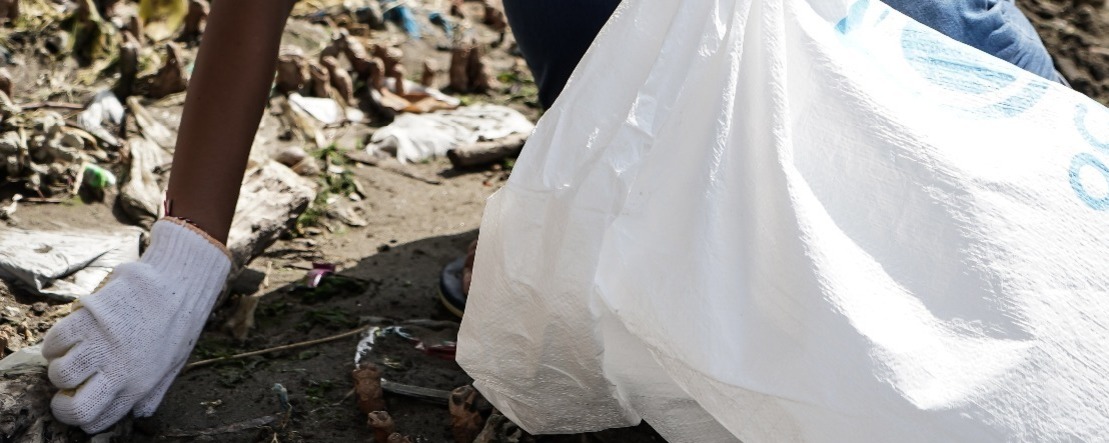Understanding Microplastics
Posted on 3rd December 2020 at 12:49

Microplastics. It’s an important issue that we’re hearing about quite a lot nowadays. The first thing that most people probably think about when they hear the term “microplastics”, or about plastic pollution, is the amount of plastic waste that is going into the oceans. While this is very serious, it’s just one aspect of plastic pollution and the presence of microplastics in the environment. They are an atmospheric pollutant, they’re in the soil, rivers, lakes, oceans and, yes, the drinking water (so this is something that’s especially important to us).
While this is a matter that has received a lot of attention in the news and media in recent years, as is always the case with these things, it needs context to be properly understood and for its importance to be fully appreciated.
So, in this post, we’re going to be exploring microplastics, their presence in their environment and what they could mean for our health.
What are Microplastics?
Microplastics can be broadly defined as plastic particles that measure less than 5mm in length. This doesn’t really narrow things down too much, as particles can vary between this size and all the way down to the micrometre, which is 1000 times smaller than a millimetre (and anything below this can be defined as a nanoplastic. The reason they get so small is, that while plastic never fully biodegrades, the particles do continuously break apart and become smaller. The particles themselves also vary, as the type of plastic, the shape and their properties (such as how flexible or dense they are) are very diverse. It’s easy to see why there is still so much more to learn and understand about microplastics – they are very complicated and it’s a complicated issue.

It doesn’t help that we are very reliant on plastics in many of the things we use on a day to day basis. While we certainly do throw away a lot of plastic, an alarming amount of this being unrecycled, we also produce a lot of plastic pollution through personal care products from shampoos and soaps to toothpaste and eyeliners and also clothing. It is also believed that 35% of the microplastic in the oceans comes from clothing. There are a few factors to this. Washing and tumble drying our clothes at home has an impact on these pollution levels; when an item of clothing is washed, it causes 700,000 microscopic fibres to eventually end up polluting the world’s oceans. The way in which clothes are manufactured should also be questioned, from the materials used to the amount of waste produced in factories. Using materials that don’t degrade so easily whilst being washed, coupled with a more sustainable approach to manufacture itself, would definitely make a difference. This would mean less material going to landfills, and less pollution from textiles being washed and tumble-dried.
Microplastics in the Environment
For a lot of people, the first thing that probably comes to mind when plastic pollution is mentioned, is the amount that goes into the ocean. For example, a 2014 study that analysed data collected from 24 expeditions (taking place in all 5 sub tropical gyres, costal Australia, Bay of Bengal and the Mediterranean Sea) from between 2007-2013, in which net tows and visual surveys of plastic debris were carried out, estimated that “at least 5.25 trillion plastic particles weighing 268,940 tons are currently floating at sea. Figures like this are certainly alarming, but it should understood that microplastics are also present in soil and as an atmospheric pollutant.


The reason they end up in the sea, isn’t just to do with direct plastic waste in the Oceans. Figures from 2010 do show that 8 million tonnes of plastic entered the Ocean that year, through various means. That’s a lot, right? Well, what’s even more shocking is that this only accounts for just under 3% of the 275 million tonnes of plastic waste that year. Plastic pollution is pervasive throughout the environment. Whether it’s from a landfill, or from underground water flow causing household plastic waste to enter the soil, or plastic fibres in the air, for just a few examples, it has become somewhat ubiquitous as a pollutant...and it’s from sources such as these that it enters rivers and lakes and other fresh water supplies. And it will come as no surprise that these microplastics are ingested by marine life, which has the potential to cause them real harm. Microplastic particles that linger in the gut could expose the organism in question to harmful chemicals. This a problem for wildlife and humans alike – simply put, fish ingest microplastic and we eat fish.
So, yes, an awful lot does eventually reach the oceans, but it’s also in soil, air and freshwater sources. And yes, it does enter the water supply as a consequence of all of this. It’s also important to note that this of course applies to most bottled water as well...after all, those bottles are usually made of plastic!
Microplastics and Health
At this time, we cannot be 100% certain about what microplastics mean for us and our health. As is often the case, more research needs to be undertaken to fully understand what we’re up against, but there have been suggestions that this could potentially be a serious long-term problem.
The issue isn’t just the plastic particles themselves, but largely with the chemicals present in plastic particles. This is especially the case for Endocrine Disrupting Chemicals (EDCs), of which thousands are present in plastics.
These chemicals can adversely affect the endocrine system, which is a series of glands that produces and secretes the hormones that regulate organs and bodily functions (respiration, metabolism, reproduction, sensory perception and movement being just a few examples). The consequences of this could be potentially quite serious, and could cause various health issues, from infertility, to diabetes and cancer and even cognitive problems. An excellent paper from Bluewater and the Mirpuri foundation, “The Global Plastic Calamity” goes into more detail about this and is definitely a must read.
It should be emphasised that a lot more needs to be done in terms of research and study, for the potential health effects of microplastic and nanoplastics to be fully understood. While no research conclusively shows that they are going to be directly harmful to us in their current concentrations, we couldn’t say that they are definitely harmless either. This 2019 WHO study goes into more detail about this.

Where We Stand
As a company that treats home water supplies to such a high standard, this is an issue that is very close to our hearts. The environmental impact, the potential effects on health and the presence of microplastics in the drinking water, are all things we take seriously. We take the time to raise awareness of issues like this in these blog posts, because they are important. This is something that is extremely relevant now and will only become more relevant in the future.
Hopefully those with the power and influence to make the right changes will do something sooner, rather than later.
All we can suggest for anyone reading this to do, is to do some background reading, further raise your awareness and, of course, to recycle.
We can remove microplastic from your drinking water
If you are looking to treat your water at home, and want to elminiate any microplastic pollution from you drinking water, we have good news - we can absolutely do that. There are a number of great reasons to treat your water at home...but microplastics are often overlooked! But if you want to find out more about removing them from your drinking water supply:
Tagged as: chemicals, endocrine system, environment, microplastics, nanoplastics, plastic, plastic pollution, plastic waste
Share this post:





